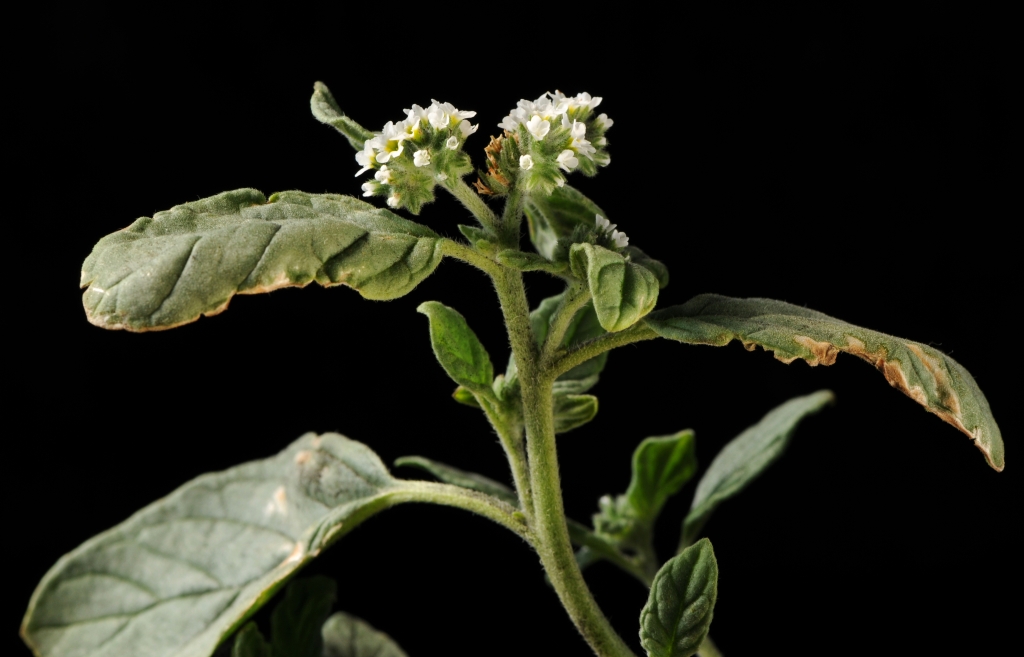Heliotropium europaeum
L. Common HeliotropeErect annual, to c. 40 cm high; indumentum of tubercle-based greyish hairs. Leaves elliptic to ovate, 1.5–7 cm long, 5–30 mm wide, apex obtuse, base cuneate, margins flat, both surfaces hairy; petiole to c. 30 mm long. Inflorescences usually branched. Sepals lanceolate, 2.5–3.5 mm long, acute, shortly connate, not elongating; corolla 4–5 mm long, throat glabrous, hairy outside, white with a yellow throat, tube c. as long as lobes; anthers acute, apices free; style very short, stigma c. 0.75 mm long, papillate. Mericarps 4, dry, falling at maturity, glabrous or pubescent, rugose, brownish. Flowers Nov.–Apr.
LoM, MuM, Wim, VVP, VRiv, MSB, RobP, MuF, GipP, OtP, Gold, CVU, GGr, DunT, NIS, HSF, HNF. Also naturalised WA, SA, NSW. Native to the Mediterranean region and western Asia. A widespread weed primarily of lower rainfall areas.
Some debate exists as to whether this species is naturalised or native. Craven (1996) considered it to be native, based largely on its first apparent collection (from the head of Spencers Gulf) in 1802, but Kloot (1983) raised the possibility that this collection may have been of a species other than H. europaeum. Plants in Australia apparently show a range of variation similar to that found in European specimens, rather than those of Asian origin. This indicates a probable European origin for the Australian plants, most likely from southern France or Italy (Moore 1956). The species is poisonous to livestock.
Jeanes, J.A. (1999). Boraginaceae. In: Walsh, N.G.; Entwisle, T.J., Flora of Victoria Vol. 4, Cornaceae to Asteraceae, pp. 387–411. Inkata Press, Melbourne.
 Spinning
SpinningCraven, L.A. (1996). A taxonomic revision of Heliotropium (Boraginaceae) in Australia. Australian Systematic Botany 9: 521–657.
Kloot, P.M. (1983). Early records of alien plants naturalized in South Australia. Journal of the Adelaide Botanic Gardens 6: 93–131.
Moore, C.W.E. (1956). Observtions on the autecology of Heliotropium europaeum L. in New South Wales. CSIRO Division of Plant Industry Technical Paper 7.




